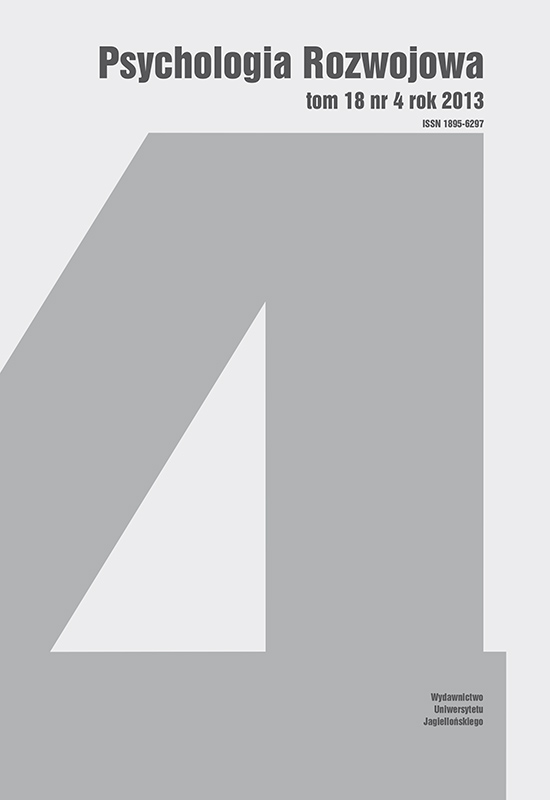Zimne versus gorące funkcje zarządzające i język a rozumienie przez dzieci własnych oraz innych osób stanów umysłowych
Cool vs hot executive functions, language and children’s understanding of their own vs others’ mental states
Author(s): Adam PutkoSubject(s): Psychology
Published by: Wydawnictwo Uniwersytetu Jagiellońskiego
Keywords: theory of mind; cool vs. hot executive functions; language
Summary/Abstract: The main purpose of this study has been to verify a hypothesis based on the assumptions of the theories by Russell (1998) and Zelazo et al. (2005), concerning the relation between the development of executive functions (EF) and theory of mind (ToM). It was hypothesized that the level of the hot EF compared to the cool EF would be more strongly connected with children’s understanding of their own mental states than those of others. In the analysis of relationships between selected aspects of the EF and ToM, the level of language development was also considered. The study covered forty-four 3- and 4-year-olds, using false-belief tasks in their “unexpected contents” version (Gopnik & Astington, 1988) as the measures of ToM development, with one question requiring the attribution of a false belief to somebody else, and another question requiring the recognition of one’s own previous belief as false. The cool EF were measured with a version of the Bear-Dragon task (Reed et al., 1984), and the hot EF with the Children’s Gambling Task (Kerr, Zelazo, 2004). Language development was assessed with the Picture Vocabulary Test (OTS-R; Haman et al., 2011). It appeared that children’s understanding of their own mental states in both age groups was related only to the cool EF, while their understanding of other people’s mental states correlated marginally with the cool EF only in 4-year-olds. The level of the hot EF was not connected signifi cantly with any aspect of ToM. Regression analysis revealed that the cool aspect of the EF was a signifi cant language-independent predictor of the understanding of one’s own mental states in 4-year-olds, but not in 3-year-olds. The results are at variance with the predictions based on the theory by Zelazo et al., but consistent with those drawn from Russell’s theory, according to which self-consciousness and self-refl ection underlie the relationship between the EF and ToM.
Journal: Psychologia Rozwojowa
- Issue Year: 18/2013
- Issue No: 4
- Page Range: 65-82
- Page Count: 18
- Language: Polish

